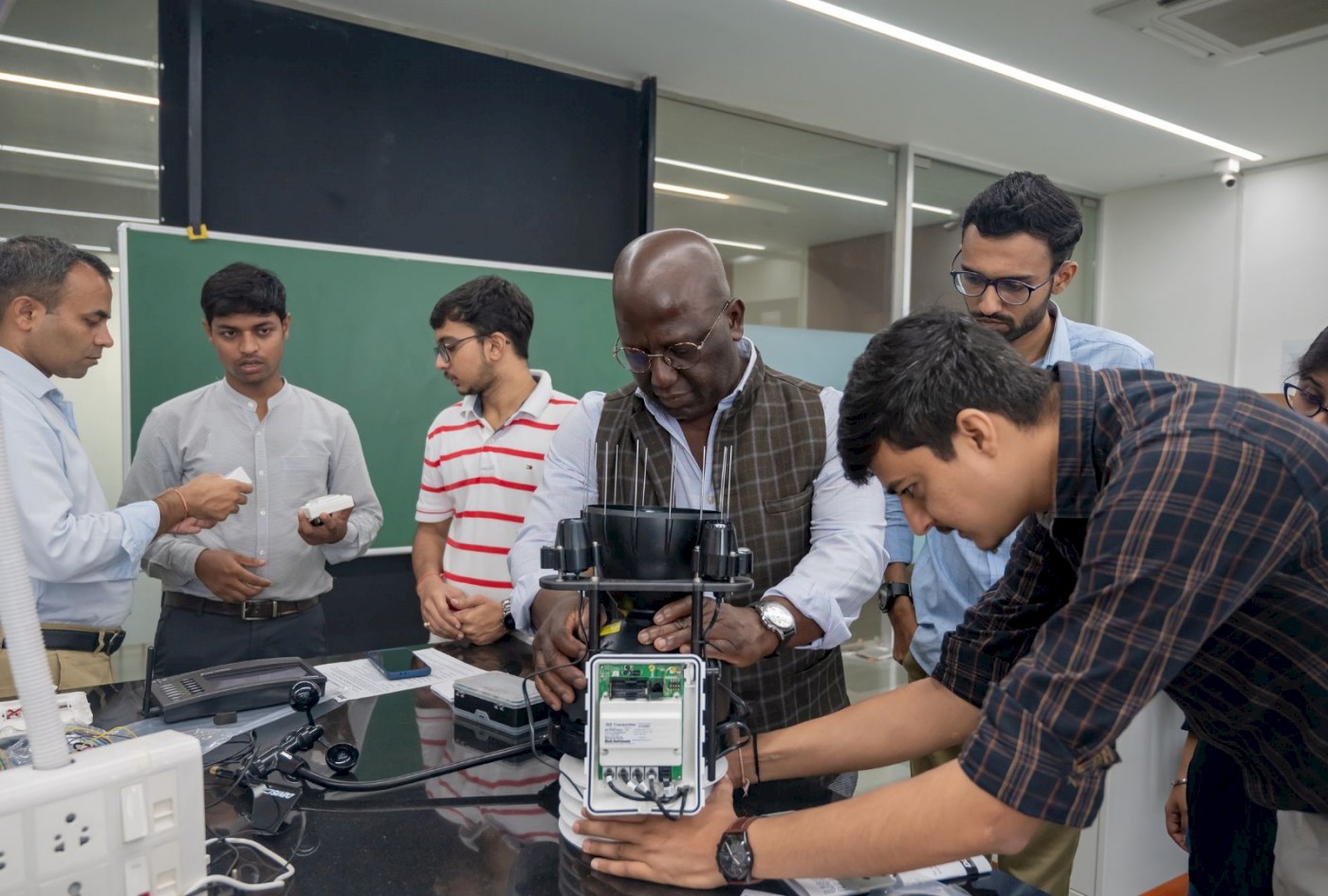
Over the winter of 2022-23, three students of Ahmedabad University spent the better part of their chilly mornings not nestled in their beds but at various points on Campus. Yash Dahima, doctoral student of Physics, Shreya Poojara, Integrated MS in Life Sciences, and Abhi Dashrathbhai Patel, BTech in Computer Science and Engineering, all researchers at the Air and Climate Research Laboratory conducted a month-long indoor air quality measurement campaign within the Ahmedabad University Campus. Aditya Vaishya, their mentor and Assistant Professor of Physics, School of Arts and Sciences, who heads the Lab, says, “Not just the mornings, the three of them would be on Campus practically till 9 at night. This, apart from their regular classes throughout the day.” The aim was to identify potential sources of particulate air pollution, compare different indoor micro-environments in terms of air quality, and assess the impact of meteorology, ambient air quality, and various activities on the air quality of the indoor spaces.
We spend a staggering 80 to 90 per cent of our time indoors, be it at the workplace or home. “Yet the study of indoor air quality has received far less attention than the study of ambient air quality. It is high time we delve into this crucial matter that affects us all,” says Professor Vaishya, explaining the need for the campaign on Campus.
As part of the campaign, the Lab designed a unique portable IoT-based low-cost air quality monitoring device in-house. Once designed, the external portable unit was made at the University’s Fabrication Workshop. The low-power consumption device, capable of running on battery, has provisions for cloud and local data storage, real-time remote monitoring using a web server, flexible firmware architecture that seamlessly integrates multiple sensors and components, and remote updating of firmware through a web interface. Professor Vaishya says, “The idea was to deploy several of these in indoor spaces across the Campus, creating an air quality monitoring network.”
The researchers then set out to identify indoor spaces or micro-environments for the air quality device deployment. Based on various criteria, such as occupancy, footfall, emission sources, ventilation, volume, and overall activity level, they decided to deploy the devices in the Cafeteria at the University Centre, a few classrooms, programme offices, and reading rooms in the basement. Measurements were taken four times during the day, with the first measurement at 7 in the morning and the last measurement at 9 in the night. In each round of measurement, spanning over 2 hours, all the locations were covered, and activity levels, footfall, type of activity, status of windows (open/close), air conditioning (on/off), etc., were recorded. While the measurements were recorded on the local device, it was also transmitted to a cloud repository and monitored in the lab in real-time for quality check.
Professor Vaishya highlights the contribution of the researchers involved in this campaign - Abhi Patel helped in putting the various sensors together and developed the firmware of the portable air quality device. He then monitored the real-time measurement through the web interface. Yash Dahima and Shreya Poojara executed the campaign and did the initial screening. And finally, Yash Dahima did the scientific analysis of the data collected.
The takeaways from the campaign have been significant as the subsequent analysis of the recordings reveals the interconnections between indoor air quality and ambient air quality, and offers insights into solutions. Professor Vaishya says, “Air quality in confined indoor spaces is better than ambient due to the physical separation of indoor spaces from the ambient. In most indoor spaces, the air exchange is via doors or windows, which, under normal scenarios, are closed. However, indoor air quality closely follows ambient air quality. The correlation between the two is very high but subject to a time lag between 20 to 100 minutes. This depends on the perforation of indoor spaces or the rate of air exchange between indoors and outdoors.”
Not surprisingly, air quality in indoor spaces with active emission sources is a cause of concern. “Indoor activities, such as cooking, soldering, welding, etc., are the dominant factor in modulating the air quality of indoor spaces,” says Professor Vaishya, adding, “Source control measures such as proper ventilation hoods, maintaining efficient combustion etc. can significantly improve the indoor air quality in such spaces. On our Campus, since we are keenly growing an urban forest, we expect the indoor air quality to improve further due to the trees acting as a buffer between the outdoors and the indoors.”

Figure 1: Frequency of occurrences of different air quality categories indoors (left), indoor spaces with active emission sources (centre), and outdoors (right).